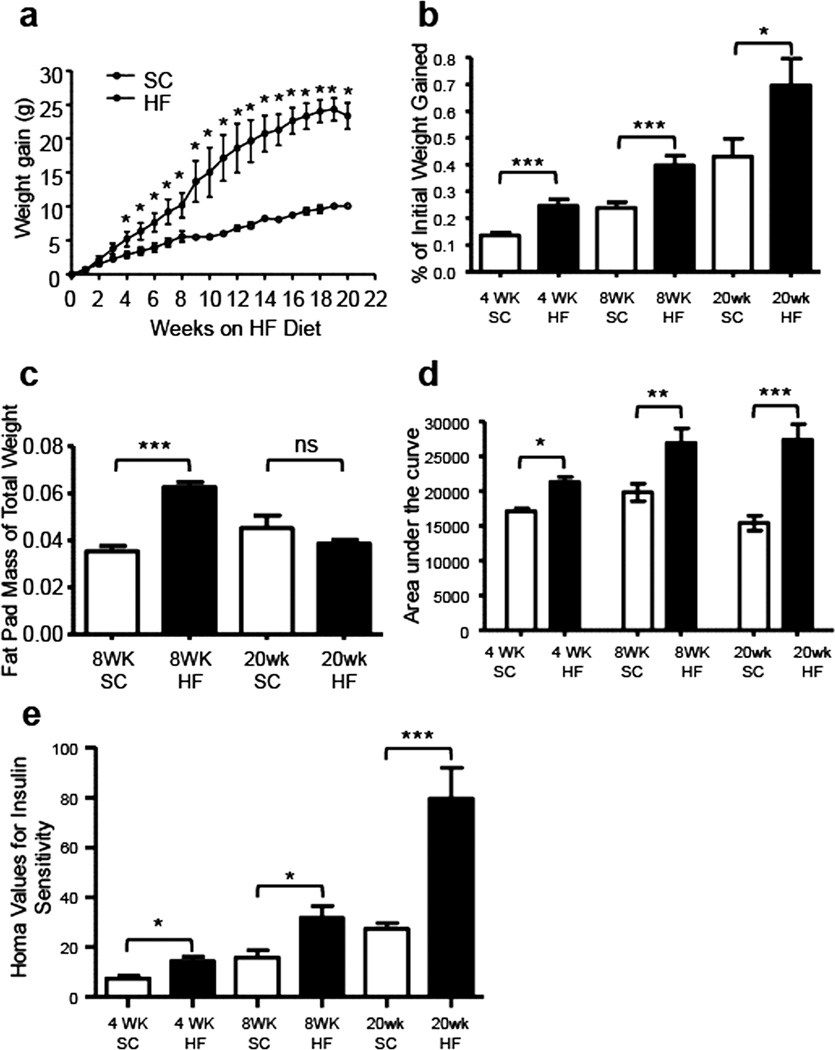Fig. 1.
The severity of HF diet-induced obesity and type 2 diabetes in C57BL6/J mice increases from 4 to 20 weeks of HF diet ingestion. After 4 weeks of HF diet ingestion, mice exhibited greater weight gain (a; n = 8, *P < 0.05, unpaired t-test) and greater proportion of initial body weight gain (b; n = 8, ***P = 0.0002 unpaired t-test) than their SC counterparts. Much greater weight gain and proportion of initial body weight gain were observed after 8 weeks (b; n = 8, ***P = 0.0007 unpaired t-test) and 20 weeks (b; n = 8, *P = 0.044 unpaired t-test) of HF diet ingestion. Mice fed a HF diet had greater epididymal fat pad mass, expressed as a percentage of total body weight (c) at 8 (n = 8, ***P < 0.0001 unpaired t-test) but not 20 weeks of HF diet ingestion (n = 8). The areas under the curves (AUC) of blood glucose levels measured before and at 30 min intervals after 1 g/kg intraperitoneal glucose injection were greater in 4-, 8- and 20-week HF diet mice, indicating that mice were glucose intolerant after 4 weeks (d, n = 8, *P < 0.019; unpaired t-test). Glucose intolerance was greatest after 8 and 20 weeks (d; each n = 8, **P = 0.0048; ***P=0.0003; all unpaired t -test). Analysis of insulin resistance by HOMA showed that HF diet mice had higher HOMA values at 4, 8 and 20 weeks, with insulin resistance becoming greater over time (e; each n = 8, **P = 0.019; *P = 0.011; *P = 0.0003; all unpaired t - test).

